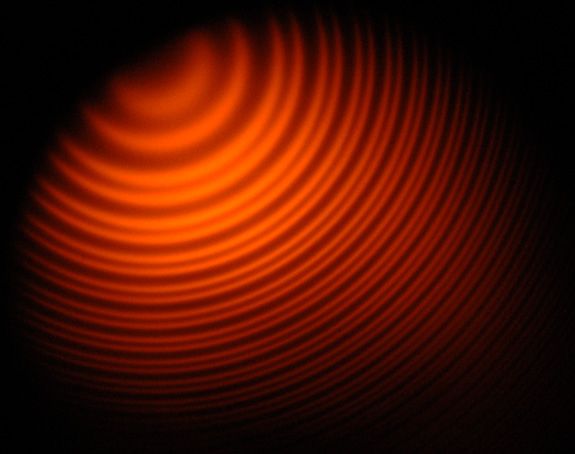Sodium Doublet on Fabry-Perot
The image below shows the appearance of the interference fringes of the sodium doublet produced by Fabry-Perot optics. This is the appearance at one position. As the micrometer is adjusted to increase the mirror spacing, the appearance changes as the fringes merge together.

|
If the micrometer is advanced until the fringes look the same again, then you have advanced one of the fringe sets one full order with respect to the other. This allows you to calculate the wavelength difference. The button below displays a movie of the progression from the appearance at left through a cycle and back to that appearance. |

Interference concepts
Example of sodium doublet
| HyperPhysics***** Light and Vision | R Nave |


